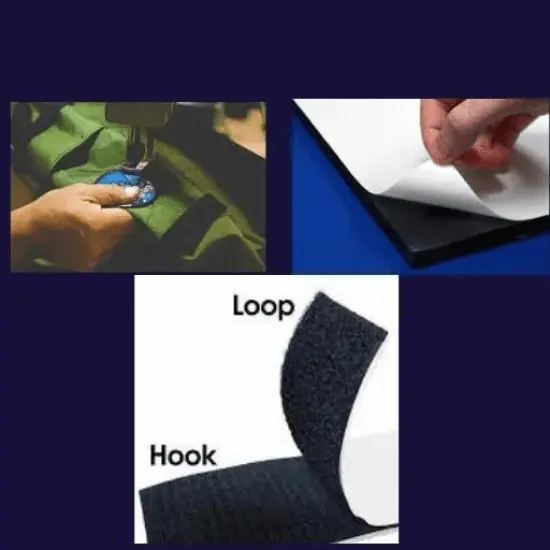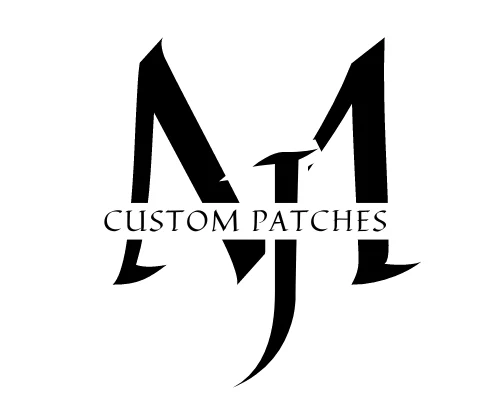Common Mistakes to avoid while designing custom patches

Custom patches offer a fantastic opportunity to incorporate a unique and individualized element into a wide range of garments, uniforms, accessories, and promotional merchandise. These patches serve multiple purposes, from showcasing brand identity to commemorating significant events or achievements. However, creating custom patches can be a multifaceted attempt that demands thoughtful deliberation to achieve the intended result. In this article, we will explore important tips and common mistakes to avoid while designing custom patches, helping you create patches that stand out and fulfil their intended purpose.
Lack of Clarity in Design
One of the crucial mistakes often made during the patch design process is the lack of clarity in design requirements. For creating an exceptional custom patch, it is essential to provide clear specifications to the manufacturer. Clearly communicating your design vision, including colour schemes, graphics, and any specific elements you want to incorporate, will help ensure that the final product aligns with your expectations. Maintaining an open line of communication with the patch manufacturer throughout the design process is equally vital, allowing for any necessary revisions or clarifications.

Color & Contrast

Colour and contrast play a significant role in the visibility and impact of custom patches. When designing your patch, it is crucial to consider the colours you choose and how they interact with each other. Opting for colours that complement each other and provide a strong contrast will enhance the patch’s visibility, making it more eye-catching and memorable. By avoiding colour combinations that blend or create poor contrast, you can ensure that your custom patch stands out when attached to various garments or accessories.
Overcomplicating the Design
While it’s tempting to include intricate details and complex designs in your custom patches, overcomplicating the design can often lead to confusion and reduced effectiveness. Creating impactful patches revolves around the principle of simplicity. Streamlining your design, focusing on essential elements, and conveying your message concisely will result in a more visually appealing and easily recognizable patch. Remember, the purpose of a custom patch is to convey a message or represent a brand, so clarity should be prioritized over excessive complexity.

Sizing & Proportions

Proper sizing and proportionality are vital aspects of effective custom patch design. When designing a patch, it is crucial to carefully contemplate its dimensions and ensure they are suitable for the intended purpose of the patch. A patch that is too small may lose visual impact, while one that is too large can appear overwhelming and unbalanced. Striking the right balance between size and design is crucial for achieving a visually appealing and aesthetically pleasing patch that effectively conveys its intended message.
Poor Choice of Patch Backing
Selecting the appropriate patch backing is often overlooked but can significantly impact the functionality and durability of your custom patches. Various backing options, such as sew-on, iron-on, and Velcro, offer different advantages and are suitable for specific applications. Sew-on patches provide a permanent attachment method, requiring stitching to affix them securely. On the other hand, iron-on patches offer convenience and ease of application as they can be attached by simply using an iron. Velcro-backed patches allow for easy removal and reattachment. Carefully considering the backing type based on the patch’s purpose and expected usage will ensure long-lasting and functional patches.

Copyright & Trademark Issues

When designing custom patches, it is crucial to respect copyright and trademark laws. Using copyrighted or trademarked designs without proper authorization can lead to legal complications and tarnish your reputation. Always ensure that your custom patch designs do not infringe any copyright protection. If you intend to use logos, artwork, or other protected elements, obtain the necessary permissions or opt for original designs that reflect your unique brand identity.
poor Quality Control
Maintaining high-quality standards is crucial when designing custom patches. Failing to implement adequate quality control measures can lead to subpar patches that do not meet expectations. Conducting thorough quality checks throughout the production process, ensuring accurate colour reproduction, precise stitching, and overall craftsmanship is essential. Regularly reviewing samples, inspecting details, and addressing any potential issues promptly will help guarantee the production of top-notch custom patches.
Poor Communication with Maker
Establishing clear and effective communication channels with the patch manufacturer is essential for a successful collaboration. Promptly respond to queries, provide feedback, and address any concerns raised during the design and production process. By maintaining open lines of communication, you can ensure that the manufacturer understands your requirements and can deliver the desired results. Regular updates and mutual understanding will help prevent misunderstandings and ensure a smooth patch creation experience.
neglecting Patch Placement
Determining the optimal placement for your custom patches is an important consideration. Different garments, accessories, or promotional items offer varying options for patch attachment. Consider the type of garment or item where the patch will be placed and ensure compatibility with the design. Strategic placement can enhance the patch’s visibility, ensuring it catches the attention of the intended audience and effectively conveys the desired message.
ignoring Budget
While it is essential to strive for the highest quality custom patches, it is equally important to set a realistic budget. Neglecting budget considerations can result in overspending or compromising on quality. Seek a balance between cost-effectiveness and desired quality by exploring different options, materials, and quantities. Transparent communication with the patch manufacturer regarding your budget constraints can help you find suitable solutions without sacrificing the overall integrity of the custom patches.
excessive or insufficient Detail
One of the common mistakes designers often encounter is the challenge of including either too much or too few details in their work. Striking the right balance when it comes to detailing is crucial for creating aesthetically pleasing and effective designs. Including an excessive amount of details can overwhelm the viewer and create visual clutter, making it difficult for them to focus on the main message or purpose of the design. On the other hand, providing insufficient details can result in a lack of visual interest or clarity, leaving the design feeling incomplete or uninspiring. Achieving the perfect equilibrium between too much and too few details requires careful consideration of the design’s purpose, target audience, and desired outcome. By finding the optimal level of detailing, designers can create captivating visuals that effectively convey their intended message while maintaining a harmonious and engaging aesthetic.
The purpose of the patch
One common mistake when designing custom patches is not clearly defining or understanding the purpose of the patch. Having a clear objective or message that the patch aims to communicate is vital. Without a well-defined purpose, the design may lack focus or fail to resonate with its intended audience. The patch’s purpose could be to represent a specific group, showcase an achievement, promote a brand or cause, or commemorate an event, among other possibilities. It is important to consider the target audience and their expectations, as well as the desired impact or impression the patch should make. By clearly identifying the purpose of the patch, designers can create a more meaningful and effective design that effectively communicates the intended message and resonates with its intended audience.
Conclusion
Designing custom patches offers an opportunity to create unique and personalized emblems that convey a message, showcase brand identity, or commemorate special occasions. By keeping the essential tips in mind and avoiding common mistakes such as lacking clarity in design requirements, neglecting colour and contrast considerations, overcomplicating the design, and rushing the production process, you can ensure the creation of visually appealing and impactful custom patches. Taking into account factors such as sizing, patch backing, quality control measures, copyright compliance, and effective communication with the patch manufacturer contributes to the overall success of your custom patch design process.






